Presented by



Spring has Sprung! Now is the time for spring cleaning and home improvement! From flooring to roofing and everything in between, find what you need in our complete guide to fixing up a home!


Presented by



Spring has Sprung! Now is the time for spring cleaning and home improvement! From flooring to roofing and everything in between, find what you need in our complete guide to fixing up a home!

The exterior components of a home, such as the siding and the roof, help to protect its occupants from the elements. While many roofing materials can last for decades, at some point in time homeowners will likely have to repair or replace the roof on their home.
Roof wear and tear may not always be so evident, particularly because most homeowners do not make it a point to get on their roofs very often. The first sign of roof damage typically is a leak that is noticeable from the indoors. It may include a browned spot on the ceiling or even pooling water in the attic. Leak from storm damage or something minor like a water intrusion through a nail hole or from a lost shingle typically can be repaired easily enough. However, additional indicators may necessitate a complete roof overhaul. Here are some signs a roof is in need of repairs or replacement.
• Sagging roof: If the roof is sagging, it could be due to excess loads, such as water-damaged shingles or even weakened roof structure. A professional will need to restore the integrity of the roof.
will have to be replaced if there is cracking or if shingles are buckling and warping.
• Exposed nails: Exposed nails may rust and contribute to a leaky roof, says Family Handyman. How long the nails were exposed could indicate if the roof can be repaired or if everything should be redone.

• Cracking and buckling: It is likely that shingles
• Lost granules: Asphalt roofing shingles have small granules on the surface. Over time these granules will slowly degrade and fall off. If there are many granules in gutters or if one can see that portions of the shingles are bare, it is likely time for a new roof.
• Visible light: Homeowners who can see light streams coming into the home need roof repair. This is indicative of holes, cracks or spaces in the roof.
•Growth on the roof: Mold and mildew on the roof is a sign that the roof needs to be repaired or replaced. Such growths contribute to rot that jeopardizes the integrity of the roof.
A durable roof protects a home from the elements. Various symptoms signal that it is time to repair or replace a roof.


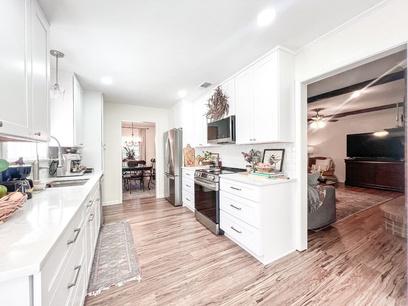

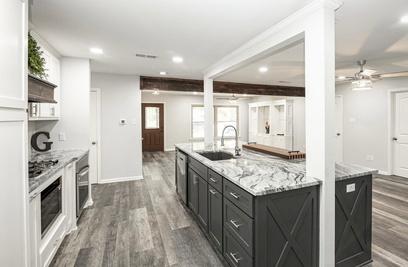
Landscape lighting has become increasingly popular in recent years. Such lighting can extend living spaces, and many homeowners report that a well-lit landscape helps them feel more safe at home. Though the final cost to light up a home’s exterior will depend on the size of a property, landscape lighting is among the more budget-friendly home renovations homeowners can consider.
According to the renovation experts at Angi. com, the average cost of a landscape lighting project is $4,000. Considering how much landscape lighting transforms the look of a property at night, that’s a lot of bang for homeowners’ bucks. Solar lights are popular, but homeowners may want to consider electrical wiring that ensures lights maintain their awe-inspiring glow throughout the night. Electrical work requires additional labor, and thus a higher price tag. However, Angi notes that modern LED bulbs consume just 25 percent of the energy used by incandescent alternatives, which can make them a more reliable option than self-installed solar lights.

Renovations are a great way for homeowners to reshape their homes. Some may aspire to renovate so their home is more reflective of their personal taste, while others may do so in an effort to make their homes better align with modern styles and sensibilities. Regardless of why a homeowner chooses to renovate, the need to do so is often evident to the naked eye, especially when the time comes to update home exteriors.
Curb appeal is often discussed in regard to the effects it can have when selling a home. But curb appeal is equally important for homeowners who aren’t putting their homes on the market. A well-maintained, aesthetically appealing home is a source of pride, while a home with fading curb appeal can make homeowners feel a little sheepish. Homeowners who want their homes to maintain their curb appeal can look for signs that it’s time to update their home exteriors.
• Curling shingles: The roof may not be the first thing people think of when pondering curb appeal, but a damaged roof can contribute to problems that ultimately affect the exterior and interior of the home. Multiple curling shingles indicate it’s time to replace the roof. The sight of curling shingles is not pretty, but the larger issue in such instances is the potential for costly water damage when water gets in through the affected shingles.
• Dated entry door: Many home improvement experts insist they can determine when a home was built or most recently renovated simply by looking at the front door. Steel and glass doors are popular in modern homes, so homeowners with front doors with ornate designs and oval glass inserts can likely benefit from an upgrade to their entryway. A modern front door can make a statement and real estate experts note how popular updated front doors are among buyers.
• Unsightly landscaping: It’s not only the physical components of the home that may suggest an update is necessary. Homeowners without a green thumb may have exterior landscaping that has seen better days. If a spring or summer day spent tending to your landscaping is not your ideal weekend pastime, then consider replacing unsightly landscaping with low-maintenance plants or hardscaping. These alternatives to more needy plants can create curb appeal without requiring any extra work for homeowners.
• Cracked driveways/walkways: If the driveway looks like a busy road at the end of snow plowing season, chances are that’s adversely affecting the impression people have of your home. In addition, cracked walkways indicate a need for renovations, as these areas are front and center when welcoming guests.
Updating a home’s exterior can restore curb appeal and help homeowners feel better about their properties.

Home renovations can increase resale value and outfit spaces to make them more accommodating to residents. Homeowners interested in remodeling projects understand that such undertakings are often a lengthy process. But the time spent waiting often is well worth it when the work is done and the finished product looks just as homeowners imagined.
Depending on the scope and scale of a project, home renovations can take anywhere from a day or two for minor cosmetic changes to nine months for a major project. The lender RenoFi says projects like remodeling a kitchen or bathroom have a lot of moving parts, including plumbing and electrical work, structural changes, flooring, and installation of appliances. Due to that complexity, such projects may take six to 12 weeks. A home addition can take months. Homeowners weary of such lengthy undertakings can implement strategies to make conditions at home more manageable.
• Get a rough estimate from contractors so that you can budget accordingly. A project will go nowhere without proper funding. Get detailed estimates that include labor and building materials. Then start saving and stash money away for the project so you’re not caught off-guard later on.
• Clear out clutter. Remove any extraneous items from the room or rooms that will be remodeled. Although it will be an added expense, it is a good idea to rent a storage unit or have a storage pod placed in the driveway or yard for the duration of the project. Move items that will not be needed into the unit. This will get them out of the way and protect them from damage.
• Consider starting in warm weather. Contractors will be going in and out of the home each day, and doors and windows may need to be propped open. Schedule a project during those months when temperatures are more comfortable. If the project involves limited access to the kitchen to cook, utilizing an outdoor grill or kitchen is much easier when the weather is pleasant.
• Stay with relatives. While some people have no issues living in a residence during a renovation, others may find the work simply too inconvenient or distracting to be around. Time away from the property can help manage stress, and prevent kids, pets and others from getting in the way of work.
• Safeguard sensitive items. Take inventory of items in the home and catalog them for insurance purposes. This way you’re covered in the case of damage or theft. Remove documents, like birth certificates, passports, insurance policies, and other private papers, and keep them in a safety deposit box or fireproof safe.
Home renovations may stretch on for weeks or months. However, with adequate preparation, homeowners can see such projects through without facing too much adversity.


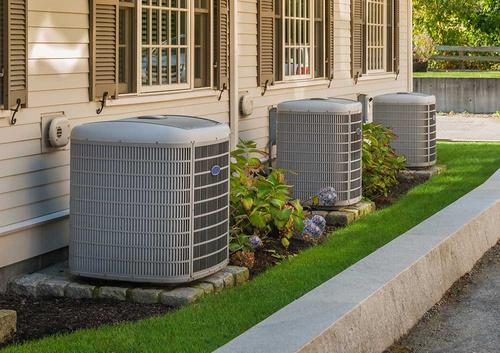

New growth is a hallmark of spring, whether it plays out in the birth of birds and bunnies or with the returned buds on trees and plant stalks. While most greenery rebounds naturally, lawns may need a little extra TLC in order to return to their once lush, green glory.
Revitalizing a lawn in spring is a multifaceted process but can be well worth the reward when green grass adds to a beautiful landscape and functional yard. Here is how to get started when the weather warms, courtesy of The Farmer’s Almanac and The Home Depot.
• Clean up debris. Spend a few hours raking up leaves from the lawn and removing any other winter debris like twigs so that air can reach the grass below. Also remove any thatch that has developed.
• Test the soil. Take a sample of the soil to determine its pH level and nutrient needs. Then you can make adjustments to set a strong foundation for the lawn to grow.
• Do some weeding. Pull out any weeds that have poked through early on and apply a pre-emergent herbicide to prevent additional weeds from taking over.
• Start the aeration process. A core aerator punches holes into the soil. This enables air and water to penetrate through to the roots.
• Overseed the lawn. Apply grass seeds over the lawn, paying special attention to any bare or thin areas so that the seed will fill in the lawn.
• Water consistently. It is important to water the lawn deeply and consistently, especially when the weather is dry, to help promote strong root development.
• Time fertilizer correctly. Apply a spring fertilizer around three weeks after the lawn starts to turn green or after the first two or three mowings. If fertilizer is applied too early it can feed weeds instead of the grass and result in fertilizer runoff.

• Mow to an appropriate height. Begin to mow when the ground is dry enough and the grass is long enough to need cutting. Leave some length to the lawn; otherwise, sunlight will reach the soil and encourage weed seeds to germinate.
With a little elbow grease at the start of spring, homeowners can establish strong and healthy lawns.
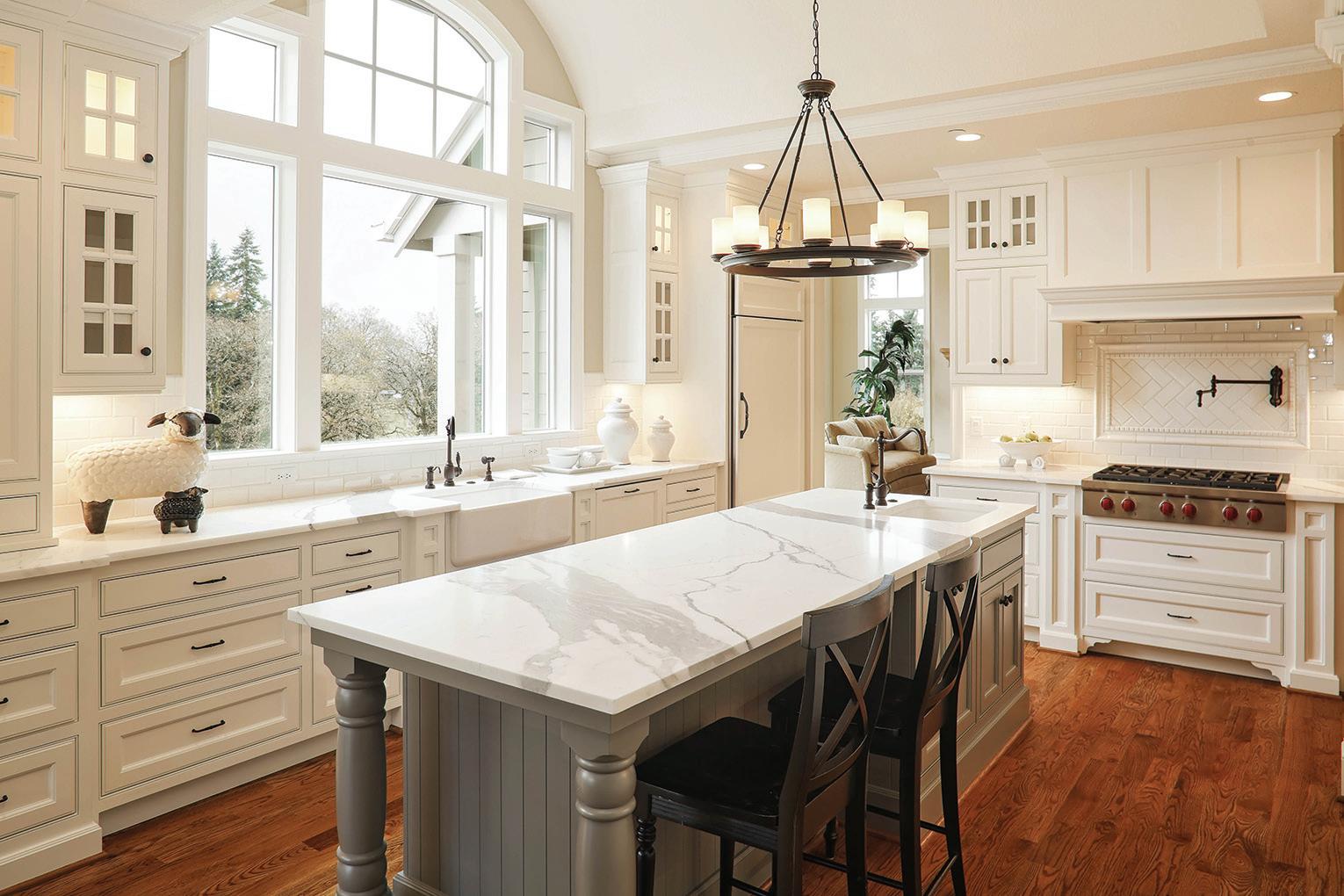
Kitchens have long been characterized as the busiest room in a home. Kitchens are where meals are prepared and cooked, but they also tend to be gathering spaces where families connect at the end of a day and where guests congregate during holiday celebrations and birthday parties.
All that time in the kitchen makes these popular rooms to renovate. Homeowners who want to give their kitchens a new look and feel without doing a full renovation can consider kitchen cabinet projects. An understanding of kitchen cabinet projects can help homeowners decide if this undertaking is for them.
• Cabinet renovations do not necessarily require replacement. Some cabinets may not need to be removed and replaced. The renovation experts at HGTV note that kitchen cabinet refacing can be a budget-friendly way to give a new look to cabinets that do not require replacement. Refacing can be as extensive as homeowners prefer, but such projects can create a whole new aesthetic in the kitchen depending on the extent of the project.
• There are many different types of kitchen cabinets. Homeowners who have never been involved in a cabinet project should know they will have many different options to choose from. Face-

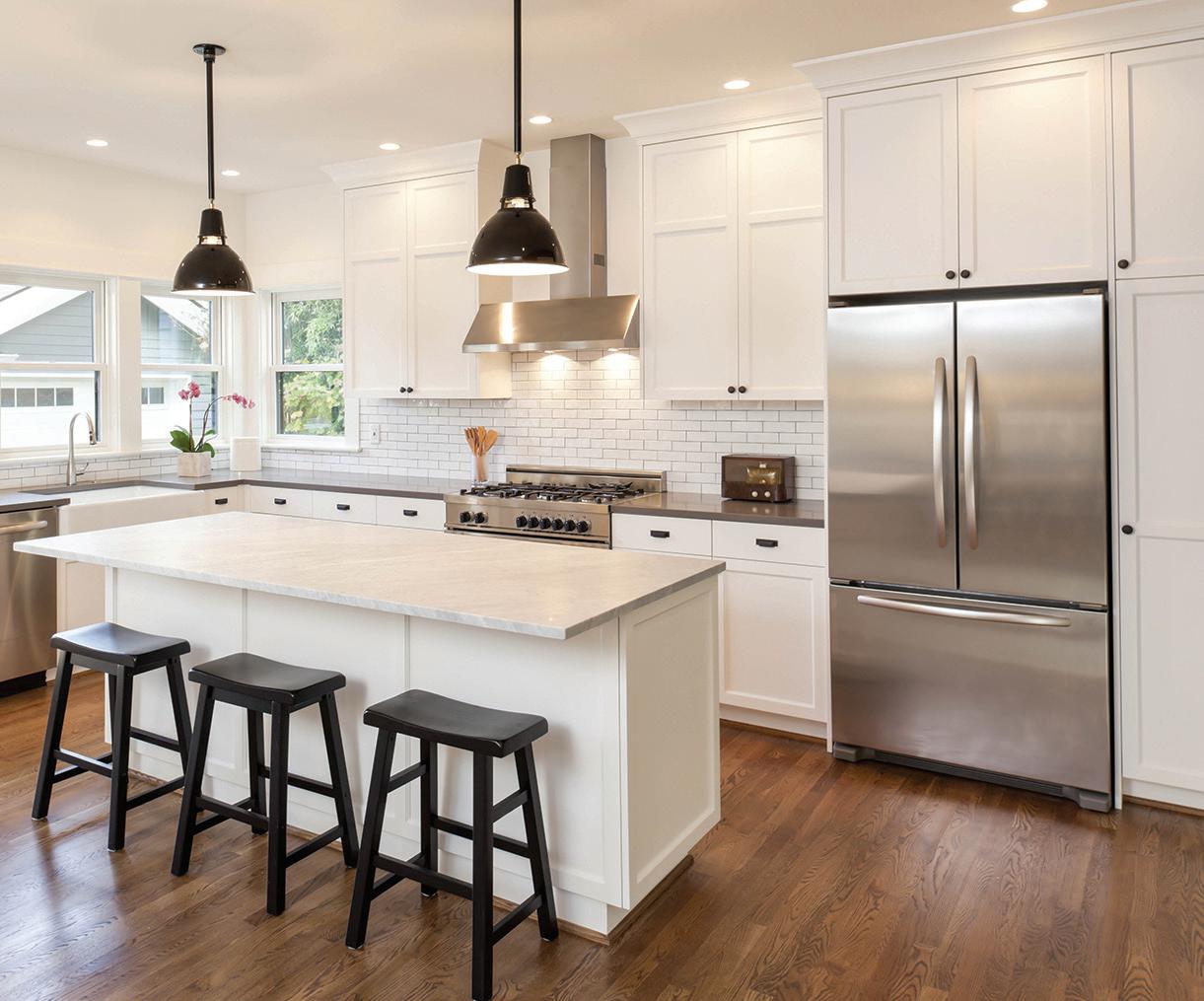
frame cabinets are a traditional choice made with a frame around the door and any drawers that might be included as part of the cabinets. Some additional options include full overlay cabinets, frameless cabinets, recessed panel cabinets, and Shaker cabinets. Homeowners hesitant to choose their own cabinets can work with a contractor and/or interior designer to find the option that aligns best with their current kitchen.
• Cabinet materials and finishes vary as well. Cabinets can be made from an array of materials, including wood, laminate, metal, and plastic. Cabinets also can be finished with paint, stain, glaze, and lacquer. Each finish has its own unique characteristics. For example, painted cabinets may need to be tended to with greater frequency than other options because paint can fade. However, painted cabinets remain popular because homeowners can paint them any color at any time.
• Consider the countertops when adjusting kitchen cabinets. Kitchens tend to have color schemes, and that scheme is often reflected in the color of cabinets and countertops. When tweaking just the cabinets, homeowners should give ample consideration to the overall color scheme of their kitchens. Interior designers can be invaluable resources for homeowners who aren’t quite sure how new or refaced cabinets will fit into an overall color scheme.
• Consider replacement if necessary. A kitchen cabinet replacement project will be more expensive than refacing the cabinets. But there are instances when cabinets require replacement. Excessive wear and tear, insufficient storage, a dated appearance, and cabinets that appear to be sagging off the wall are some indicators that replacement is necessary.
Updated cabinets can give a kitchen a whole new look, even if the cabinets are refaced instead of replaced.

Outdoor living spaces have become sought-after commodities among homeowners. A 2022 survey of homeowners conducted by the New Home Trends Institute found that open yards are less appealing to home buyers than they once were. The survey noted that just 28 percent of respondents chose open yards, while 65 percent preferred patios and 55 percent chose decks. Green spaces remain popular, but the survey indicates that many would-be home buyers also want an outdoor living area to make the most of their home exteriors.
Homeowners aspiring to transform their home exterior spaces typically must decide between a deck or pavers when the time comes to plan such areas. That’s a personal choice homeowners must make, but those without strong feelings on either option can consider these tips as they try to decide if a deck or pavers are for them.
• Determine your budget. Budget is a notable variable with any home renovation project, and the addition of an outdoor living space is no exception. The materials homeowners choose will ultimately determine the cost of each project. For example, composite decking materials tend to cost significantly more than wood decks, but that higher price tag also comes with less maintenance and typically a longer life span. Pavers may prove less expensive than composite decking, but those cost savings may be negligible if a yard requires extensive excavation to prepare an area for a new patio. It requires patience, but gathering estimates of the various materials can serve as a good starting point when planning an outdoor living space. In addition, homeowners must recognize that material costs can fluctuate considerably over time, as such prices are often contingent on a range of variables, including supply chain issues. So it’s best to gather estimates in a short period of time to make the most accurate price comparisons.
• Identify your vision for the space. Homeowners who have a vision for their outdoor living space, even if they are not sure about which material they prefer, may find the process goes more quickly and even more smoothly than those who are unsure about what they want. Those who prefer a flexible multi-use space may be best going with pavers, as the spaces can be easily converted and areas simply designated as one might differentiate between rooms inside the home. For example, an outdoor living room can be separated with the installation of a pavillion and fireplace, while kitchen and dining areas can be separate spaces on the same patio. Decks tend to be less flexible, which might make them ideal for homeowners who prefer an outdoor dining area but don’t need a more expansive entertaining space. Of course, decks can be as big as homeowners choose, which can make the spaces more multi-functional.
• Recognize both may be in your best interest. Homeowners also should know that many outdoor living spaces feature both a deck and a paver patio. Homeowners may like an elevated deck that steps down to a patio, which can easily distinguish between the spaces and establish the area as a multifunctional space.
Homeowners planning outdoor living space projects may find themselves choosing between a deck and pavers. Each option can work, and homeowners may even want to combine the two.
An “out with the old, in with the new” mentality can extend to people’s visions for their homes. A home in need of repair or renovation can serve as a catalyst to take inventory of personal style and help make interior spaces reflect one’s unique vibe.
A living room can grow stale over time and often serves as a catch-call for clothing, blankets, gadgets, and other items. Upon recognizing a living room has seen better days, individuals may decide it’s time to give the space a new vibe. That transformation can start with these strategies.
Organize first
Clutter frequently is the culprit behind a living room that may not give off the vibe individuals desire. As families grow and people add belongings, space may be at a premium. Less is more has never been a more important concept. Remove extraneous items before purchasing new furniture or transitioning to a new design. You may even want to remove everything and start from scratch before reintroducing desirable elements to the space.
Seek the assistance of professionals
Some people are adept at decorating and designing spaces. But just as you wouldn’t perform your own medical procedures, you should leave jobs like interior design and renovations to the professionals. Hiring a professional interior designer and contractors can really bring a living room together in ways homeowners may have never imagined. These pros can build off of your ideas and truly create a space that may be worthy of a magazine spread.
Promote wellness
You may want to consider adding natural materials in the design to promote well-being. Eco-friendly furnishings, raw fibers and organic textures will create an environment from sustainable choices. Plenty of plants also can create a welcoming environment that helps you surround yourself with positive energy and the items you love.
Light it up
One of the easiest ways to transform a room’s vibe is to utilize lighting. Change draperies to allow more natural light to shine in. Consider additional windows or skylights if yours is a particularly dark home. If you desire to create a more vivid or cozy ambiance, use a combination of accent, task and supplemental lighting in the space so there are no dim corners.

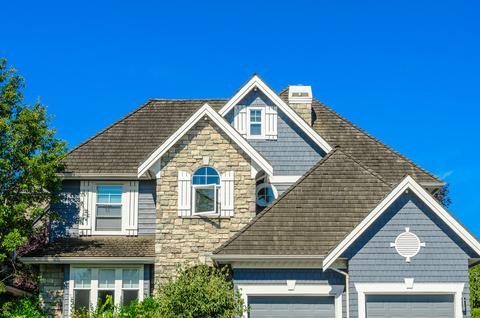
Create an industrial or urban vibe
Industrial-chic design celebrates the bones of a building. It’s what makes city lofts so appealing, with their exposed beams and brick. Even those who live in suburbia or out in the country can give a living room this look with subtle nods to the style. Unadorned windows, clean lines on furniture, oversized, gallery-style art, and metal accents can add touches of this popular look to your home.
Revamping a living room doesn’t have to be difficult. With an idea in place and some professional touches, an entirely new vibe can be achieved.